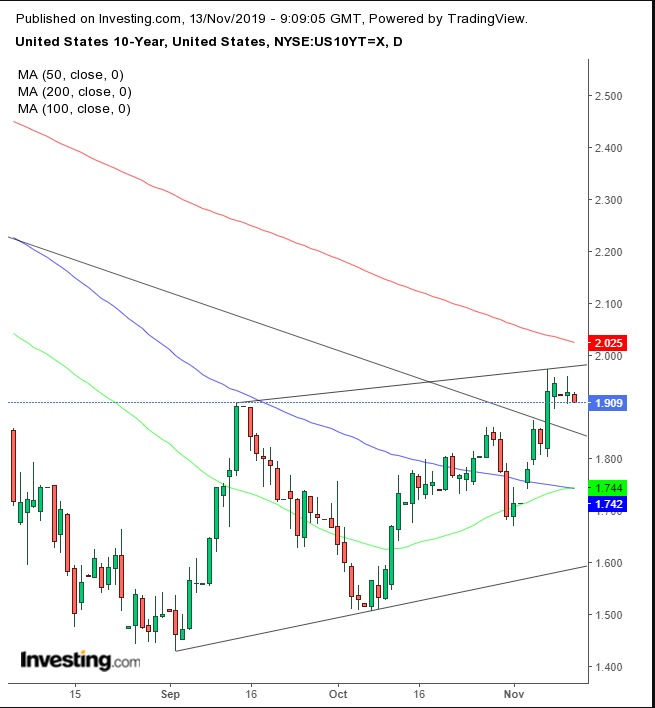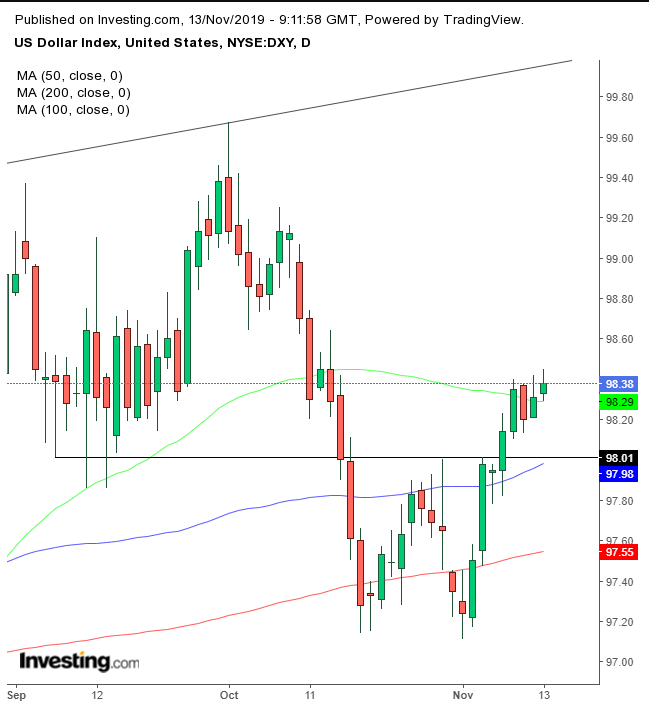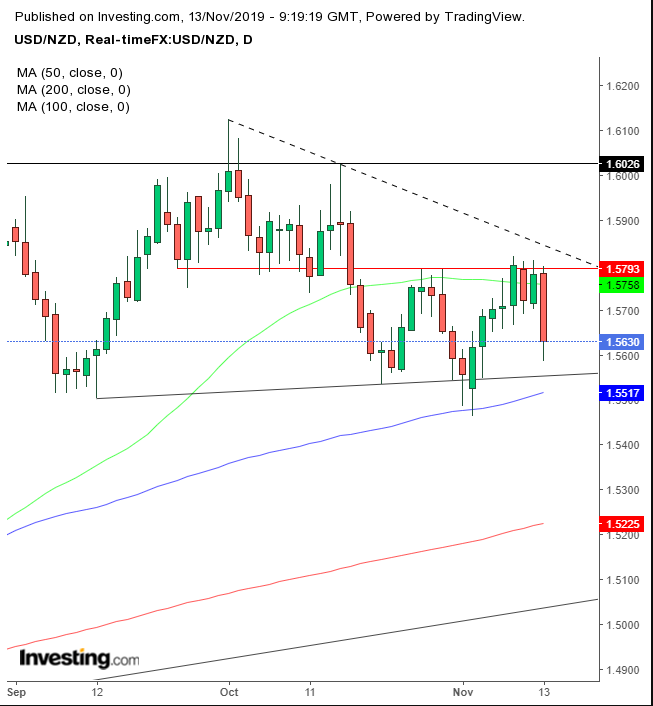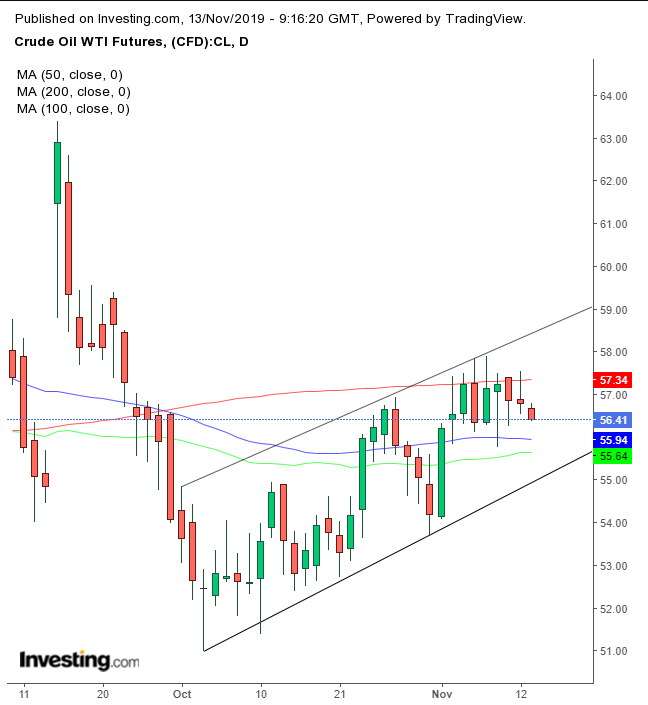Key Events
After U.S. President Donald Trump renewed his tariff threat against China, U.S. futures contracts—including for the NASDAQ, Dow and S&P 500—retreated from their all-time highs. As well, this morning, exacerbated by the roiling unrest in Hong Kong, global shares are a sea of red.
Global Financial Affairs
Life in Hong Kong is in "disarray," after a night of fierce confrontations. According to reports, public transportation has been suspended or delayed, universities are closed, and workers took to the streets for a third straight day. Nonetheless, trade remains the most influential theme for markets, now that major central banks are seen to be keeping rates unchanged and the current earnings season is winding down.
Still, while some might underestimate the impact the turmoil in Hong Kong has on global markets, keep in mind that Chinese companies are exposed to selloffs on that city's Hang Seng exchange. As the world’s second largest economy, the fallout for China—embroiled in a trade war with the world’s largest economy, no less—could be severe.
One obvious potential downside: the trade agreement itself. While lately the U.S. has been quiet about the civil unrest in the city, Trump has previously voiced concerns. If he decides to get involved, it could make a trade deal a lot more difficult to come by. Which is probably why he's been silent on the situation during the latest round of violence.
This morning the STOXX Europe 600 Index moved lower, along with bank shares, after ABN AMRO Group (AS:ABNd) missed on earnings.
Hong Kong’s Hang Seng plunged, (-2.02%), leading the Asian financial hub into an economic depression. Japan’s Nikkei 225 slumped, (-0.85%), along with South Korea’s KOSPI (-0.86%) and Australia’s ASX 200 (-0.91%).
On Tuesday, immediately after Trump's speech, shares in the U.S. edged higher on cautious optimism for an incremental trade agreement. The S&P 500, (+0.16%), notched a new all-time high but finished shy of a record close. The NASDAQ Composite, (+0.26%), posted a new record, on both a closing and intraday basis. That's particularly surprising considering the recent trade rhetoric and the sector’s sensitivity to trade relations between the world’s two largest economies.

However, yields, including for the benchmark 10-year note, were pushed lower as investors rotated out of stocks and into Treasurys. Yields slipped from the top of a rising channel, after recently climbing over the downtrend line since November 2018.

The dollar climbed to its highest point since Oct. 14, clearing the 50 DMA, after completing a small double bottom. However, as of 4:10 EDT it has retreated, demonstrating a line of supply concurrent to the weekly highs.

New Zealand’s dollar jumped, after the country’s central bank unexpectedly kept interest rates unchanged. Technically, the Kiwi found resistance by the neckline of a small H&S top.

Gold is climbing for a second day, even against the pressure of a strengthening dollar. Technically, the price of the precious metal bounced off the bottom of a falling channel.

The price of oil fell for the third straight day, on trade worries and oversupply. The price found resistance by the 200 DMA, realigning with the top of a rising channel.
Up Ahead
- Earnings season is coming to an end. Remaining reports due this week include those from Walmart (NYSE:WMT), and Cisco (NASDAQ:CSCO).
- Fed Chairman Jerome Powell testifies before the Joint Economic Committee of Congress in Washington on Wednesday.
- U.S. CPI on Wednesday may provide more clues to the the Fed’s policy path.
- Thursday brings China retail sales and industrial production data.
- U.S. retail sales, released on Friday are forecast to have rebounded in October, after unexpectedly falling the prior month.
Market Moves
Stocks
- The Stoxx Europe 600 Index slipped 0.2%.
- Futures on the S&P 500 Index declined 0.2%.
- The U.K.‘s FTSE 100 Index fell 0.4%.
- The MSCI All-Country World Equity Index dipped 0.2%.
- The MSCI Emerging Markets Index sank 0.8%.
Currencies
Bonds
- The yield on 10-year Treasuries sank two basis points to 1.91%.
- The yield on 2-year Treasuries decreased one basis point to 1.66%.
- Britain’s 10-year yield declined two basis points to 0.789%.
- Germany’s 10-year yield dipped two basis points to -0.27%.
- Japan’s 10-year yield fell two basis points to -0.042%.
